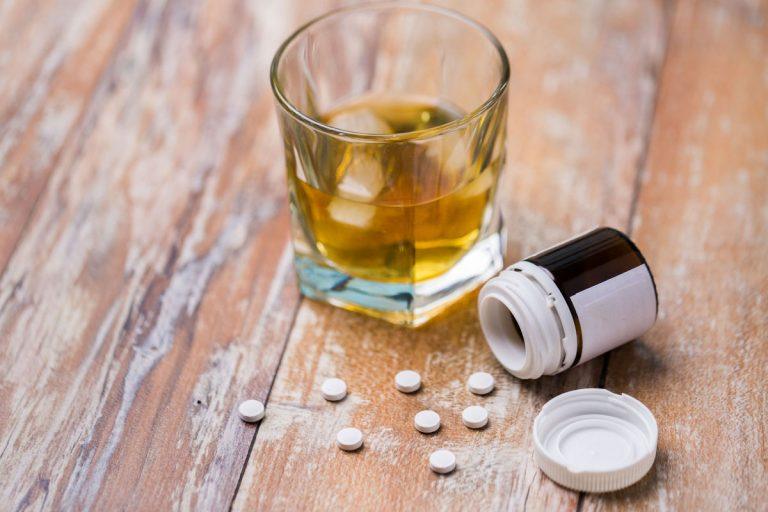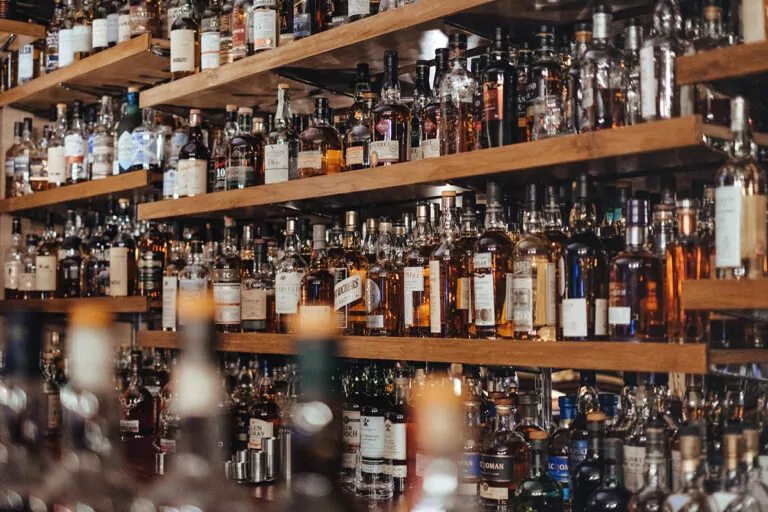Annual surveys on drug and alcohol consumption in the United States are the primary sources of information about the use of recreational drugs. Over the years, this research has demonstrated shifting trends and geographical differences in substance abuse. But the findings have consistently highlighted a significant co-occurrence and complex inter-relationship between substance use disorders with other psychiatric illnesses. To illustrate the drugs that are popular in the United States and show the modern trends in substance abuse, here are the most commonly used recreational drugs in America, both legal and illegal.
Alcohol
Alcohol tops the charts among intoxicating substances used by Americans. An overwhelming 86% of adults in the US report drinking alcohol in their lifetime. More worrisome, however, is the fact that 26% of adults report binge drinking within the past month. Binge drinking and heavy alcohol use are risk factors for addiction. An estimated 14.4 million Americans are battling alcohol use disorder, yet less than 8% have received addiction treatment in the past year.
Drinking is accepted in American culture and encouraged in social situations. Because it is legal, people perceive alcohol as less dangerous than illegal drugs. Alcohol intoxication is tolerated on certain occasions. Alcohol is so well-accepted in modern society that people often forget it is a recreational drug. The truth is alcohol is a potent substance and its abuse is associated with a host of negative health effects.
Tobacco
Tobacco is the leading cause of preventable death, disability, and disease in the United States. An estimated 40 million American adults smoke cigarettes. Every day, roughly 1,600 adolescents under the age of 18 smoke their first cigarette. Smoking or exposure to second-hand smoke claims half a million American lives each year. The economic burden of smoking-related diseases is to the tune of $170 billion each year. Yet, the tobacco industry continues to promote and market tobacco products.
The effects of smoking are evident in nearly every organ system in the human body. In addition to cancer, smoking causes lung diseases and irreversible lung damage. Smoking also significantly increases the risk of stroke, heart attack, aneurysms, and vascular disease. Smoking is a risk factor for coronary artery disease, which is the leading cause of death in the United States.
Marijuana
Marijuana (cannabis, weed, pot) is the most commonly used illegal recreational drug in the US. Approximately 45% of American adults report using marijuana in their lifetime. Its use is particularly widespread among adolescents and young adults. More than 35% of 12th graders reported past-year use of weed on a nationwide survey.
Many of the 37 million marijuana users in the US are not aware of the wide range of health effects it can have on the brain and body. Besides the fact that marijuana is addictive, it has direct effects on the brain and can lead to problems with memory, learning, attention, and brain development.
Cocaine
Nearly 15% of American adults report using cocaine in their lifetime. Roughly 40% of drug-related emergency department visits involve cocaine. Cocaine claims about 5,000 American lives each year.
Do you have a loved one struggling with addiction?
We know how hard that can be. Give us a call to find out what options you have.
Crack/cocaine is a highly-addictive stimulant drug that people abuse for its euphoric effects. The drug increases the levels of dopamine in the brain, a natural chemical that regulates feelings of pleasure. However, repeated use of cocaine can have a range of health effects, including disturbances in heart rhythm, heart attack, seizures, strokes, and coma. Even the first use of cocaine can lead to sudden death as a result of cardiac arrest or seizures.
Heroin
Nearly 950,000 Americans report heroin use in the past year, a number that has been rising over the past decade and a half. This trend is driven largely by young adults in the 18-25 age group. Roughly 170,000 people use heroin for the first time each year. The effects of heroin use can be felt across the United States from coast to coast. Heroin affects communities nationwide and is no longer predominantly abused in urban areas.
Heroin belongs to a class of drugs called opioids. Besides addiction, the long-term effects of heroin abuse include damage to the lungs, heart, brain, and liver. Mixing heroin with other drugs, including prescription medications, can have unpredictable and dangerous effects, such as slowing or cessation of breathing, overdose, and death. Overdose deaths involving opioids (including prescription opioids, synthetic opioids, and heroin) have increased six-fold since 1999 and claimed 47,000 American lives in 2018.
Hallucinogens
Approximately 15% of Americans have used hallucinogenic drugs like LSD and Ecstasy. These powerful mind-altering drugs cause sensations and images that seem real but are not. Hallucinogens produce potent effects on the human brain by interfering with chemicals that regulate mood, sleep, hunger, muscle control, body temperature, sensations, and sexual behavior.
Methamphetamine
The lifetime prevalence of methamphetamine (crystal meth) use in the United States is just over 5%. Methamphetamine is a powerful, highly addictive stimulant drug that has severe effects on the human nervous system. Short- and long-term health effects of methamphetamine include increased wakefulness, decreased appetite, fast breathing, irregular heart rate, increased blood pressure, and increased body temperature. People who abuse meth are at an increased risk of contracting infections like HIV and hepatitis.
Prescription Drugs
Every day, nearly 5,500 Americans misuse prescription pain relievers for the first time. An estimated 2 million Americans misuse prescription pain pills, 1.5 million misuse tranquilizers, and about 275,000 misuse sedatives for the first time each year. Young adults in the age group of 18-25 are the most affected by the non-medical use of prescription drugs. Recreational use of prescription drugs claims thousands of lives each year in the United States. Opioids are currently responsible for the majority (nearly 70%) of drug overdose deaths.
From alcohol to marijuana, most American adults have tried recreational drugs in their lifetime. Legal substances are the most commonly used recreational drugs, but illegal drug use is not uncommon. America’s vices are taking a heavy toll on the nation with severe health effects, social consequences, and billions of dollars in healthcare costs.




